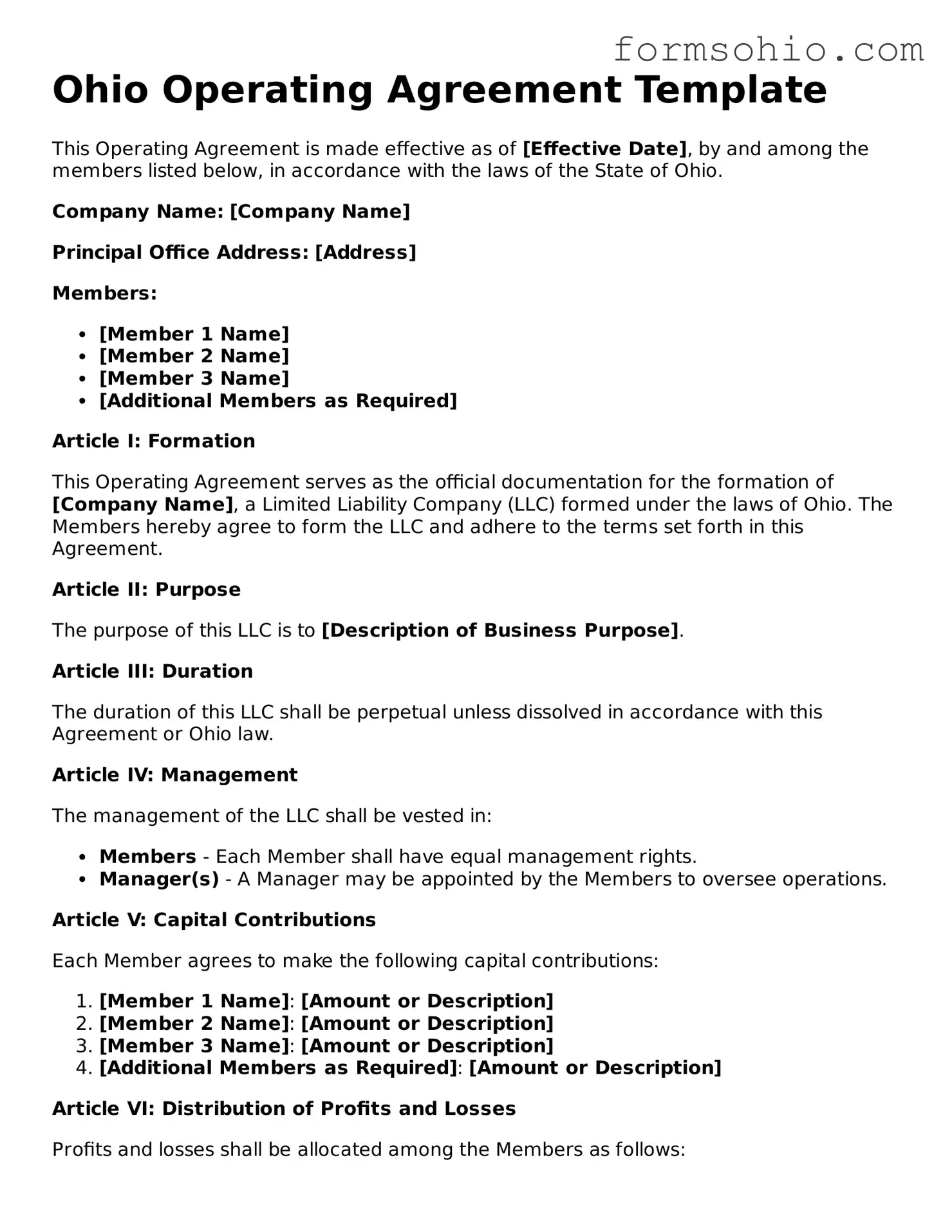Ohio Operating Agreement Template
This Operating Agreement is made effective as of [Effective Date], by and among the members listed below, in accordance with the laws of the State of Ohio.
Company Name: [Company Name]
Principal Office Address: [Address]
Members:
- [Member 1 Name]
- [Member 2 Name]
- [Member 3 Name]
- [Additional Members as Required]
Article I: Formation
This Operating Agreement serves as the official documentation for the formation of [Company Name], a Limited Liability Company (LLC) formed under the laws of Ohio. The Members hereby agree to form the LLC and adhere to the terms set forth in this Agreement.
Article II: Purpose
The purpose of this LLC is to [Description of Business Purpose].
Article III: Duration
The duration of this LLC shall be perpetual unless dissolved in accordance with this Agreement or Ohio law.
Article IV: Management
The management of the LLC shall be vested in:
- Members - Each Member shall have equal management rights.
- Manager(s) - A Manager may be appointed by the Members to oversee operations.
Article V: Capital Contributions
Each Member agrees to make the following capital contributions:
- [Member 1 Name]: [Amount or Description]
- [Member 2 Name]: [Amount or Description]
- [Member 3 Name]: [Amount or Description]
- [Additional Members as Required]: [Amount or Description]
Article VI: Distribution of Profits and Losses
Profits and losses shall be allocated among the Members as follows:
- Equal Sharing - All Members shall share profits and losses equally.
- Proportional to Ownership - Profits and losses will be divided based on ownership percentages.
Article VII: Transfer of Membership Interests
No Member may transfer their membership interest without the consent of the other Members. In the event of a proposed transfer, the remaining Members shall have the right of first refusal.
Article VIII: Dissolution
Upon dissolution of the LLC, the remaining assets shall be distributed to the Members in proportion to their respective ownership interests, after settling all liabilities of the LLC.
IN WITNESS WHEREOF, the undersigned have executed this Operating Agreement on the date first above written.
______________________________
[Member 1 Name], Member
______________________________
[Member 2 Name], Member
______________________________
[Member 3 Name], Member
______________________________
[Additional Members as Required]
